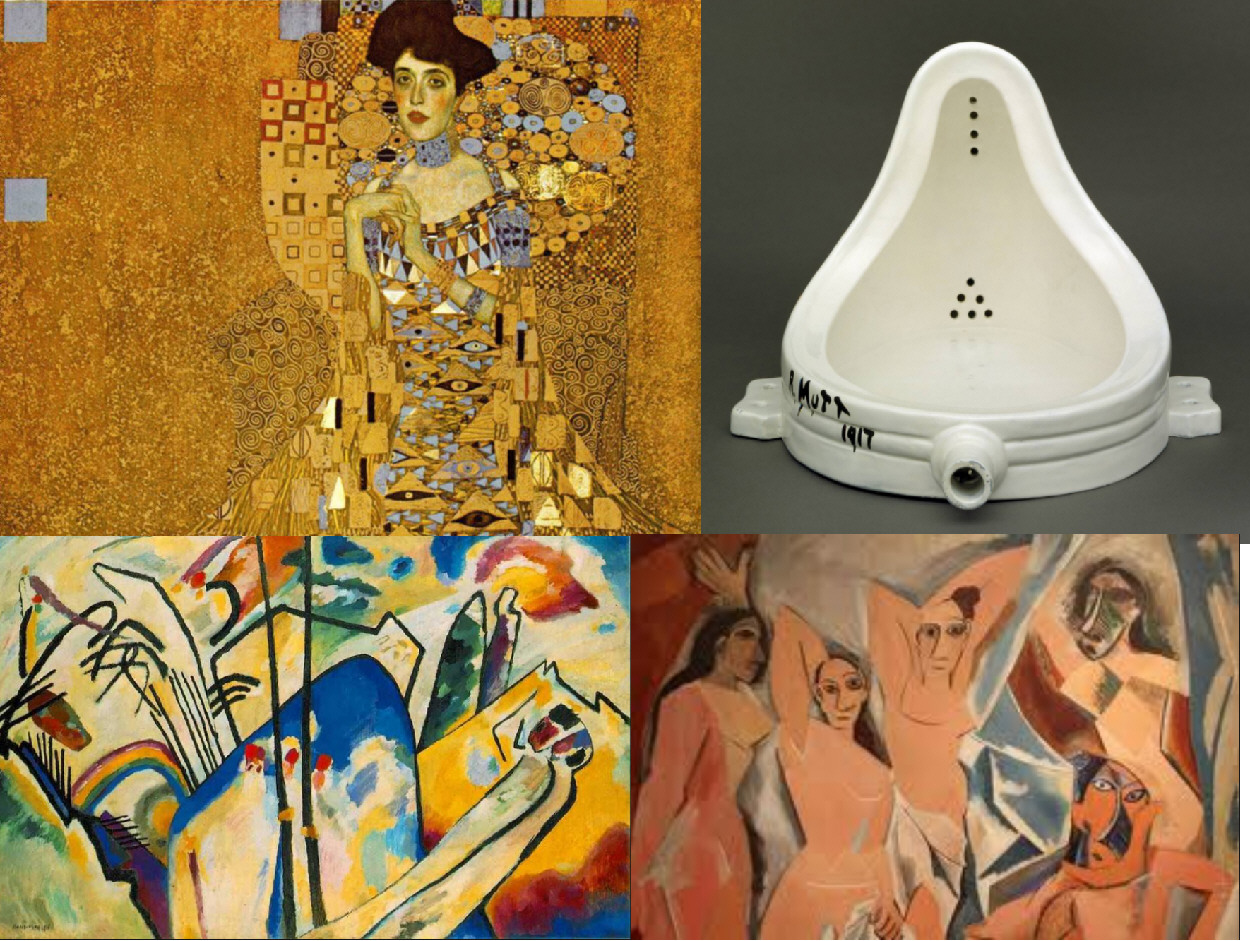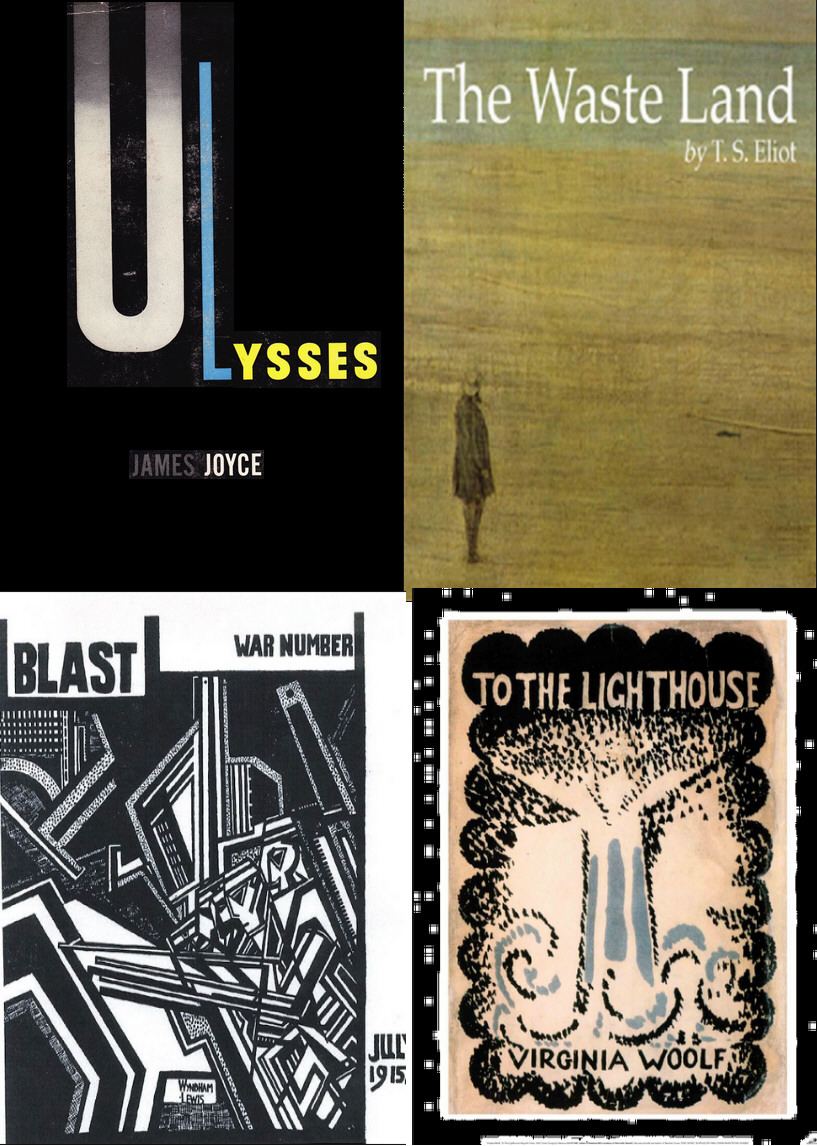The Great War and Modernism: An Introduction
By Jane Mattisson
You might ask, “What is modernism
and what has it got to do with the Great War? Isn’t it primarily a cultural
movement that is more to do with art and literature than war?” Unfortunately
there are no clear-cut answers to these questions, but as I hope to show over
the next few months, the Great War and modernism are much more closely
intertwined than has previously been thought.
As a period, modernism refers to the 1910s and 1920s, and as a set of
cultural characteristics it includes formal experimentation and innovation,
rupture, ambiguity, disorder, crisis, fragmentation, cultural pessimism, and
moral relativism.
Modernism continues to be hotly
debated by historians and art/literary critics alike. This has given rise to a
growing number of publications, some of which will be reviewed on Roads to the
Great War over the next few months. As Vincent Sherry (author of The Great War and the Language of Modernism,
2003, to be reviewed in our series later) argues, the mass technological
warfare of the Great War put an end to the prewar faith in science and
material progress, thereby paving the way for what we refer to today as the
modernist movement.
Click on Image to Expand
Four Influential Modernist Art Works
Clockwise from top left: Portrait of Adele Bloch Bauer I, Gustave Klimt, 1907; Fountain, 1917, Marcel Duchamp; Les Demoiselles d'Avignon, 1907, Pablo Picasso; Composition IV, 1911, Wassily Kandinsky.
Traditionally, modernism has
incorporated the avant-garde, which strove toward freedom in almost all areas
of human endeavor — political, cultural, and intellectual — and included the
emancipation of women, homosexuals, the proletariat, youth, and people in
general. Modris Eksteins (author of Rites
of Spring, 1989, also to be reviewed in our series) claims that it was the
Great War that was the psychological turning point for modernism. After the
war, he argues, “The urge to create and the urge to destroy had changed
places.”
At a forum of world-renowned historians held in Kansas City in 2008, Robert Wohl and Jay Winter discussed the impact of the Great War on European history. Wohl claimed that “the war seemed to support the modernists’ claim [that] there was going to be a cultural break in Europe and that everything was going to be different in the future . . . The war was a spectacular example of that” (Winter, The Legacy of the Great War: Ninety Years On, 2009). This notion of difference, so vital to understanding the modernist movement, is subtly captured by the novelist Virginia Woolf:
At a forum of world-renowned historians held in Kansas City in 2008, Robert Wohl and Jay Winter discussed the impact of the Great War on European history. Wohl claimed that “the war seemed to support the modernists’ claim [that] there was going to be a cultural break in Europe and that everything was going to be different in the future . . . The war was a spectacular example of that” (Winter, The Legacy of the Great War: Ninety Years On, 2009). This notion of difference, so vital to understanding the modernist movement, is subtly captured by the novelist Virginia Woolf:
Nothing was changed; nothing was different save only —
here I listened with all my ears not entirely to what was being said, but to
the murmur of current behind it. Yes, that was it — the change was there. Before the war at a luncheon party like
this people would have said precisely the same things but they would have
sounded different, because in those days they were accompanied by a sort of
humming noise, not articulate, but musical, exciting, which changed the value
of the words themselves (A Room of One’s
Own, 1928; emphasis added).
Click on Image to Expand
Four Influential Modernist Literary Works
Modernism represents a rupture with the past, a break
in values and perception that infused all areas of life: social, political,
economic, and cultural. The Great War was not “great” merely because of its
magnitude but also because of its revolutionary effects. It is these which are
so clearly encapsulated in the modernist movement that continue to exercise the
minds of historians and literary critics to this day. Our series of reviews on
this blog will include some of the most important works on the subject
published in the past thirty years, looking at the Great War both as history
and as narrative. As a result we will gain a clearer understanding of what
modernism is and how we have all in one way or another been influenced by it.
In this vein, tomorrow’s post will look at Pearl James’s book The New Death: American Modernism and World
War 1.



The Great War had such an influence on the modern world and our lives. I am glad to see the exploration and reporting of this.
ReplyDeleteThank you for this comment, Dennis. We felt it was important to highlight the link between the War and the Modernist movement. It helps us to understand why the War had, and continues to have, such an impact on our lives. Jane.
ReplyDelete